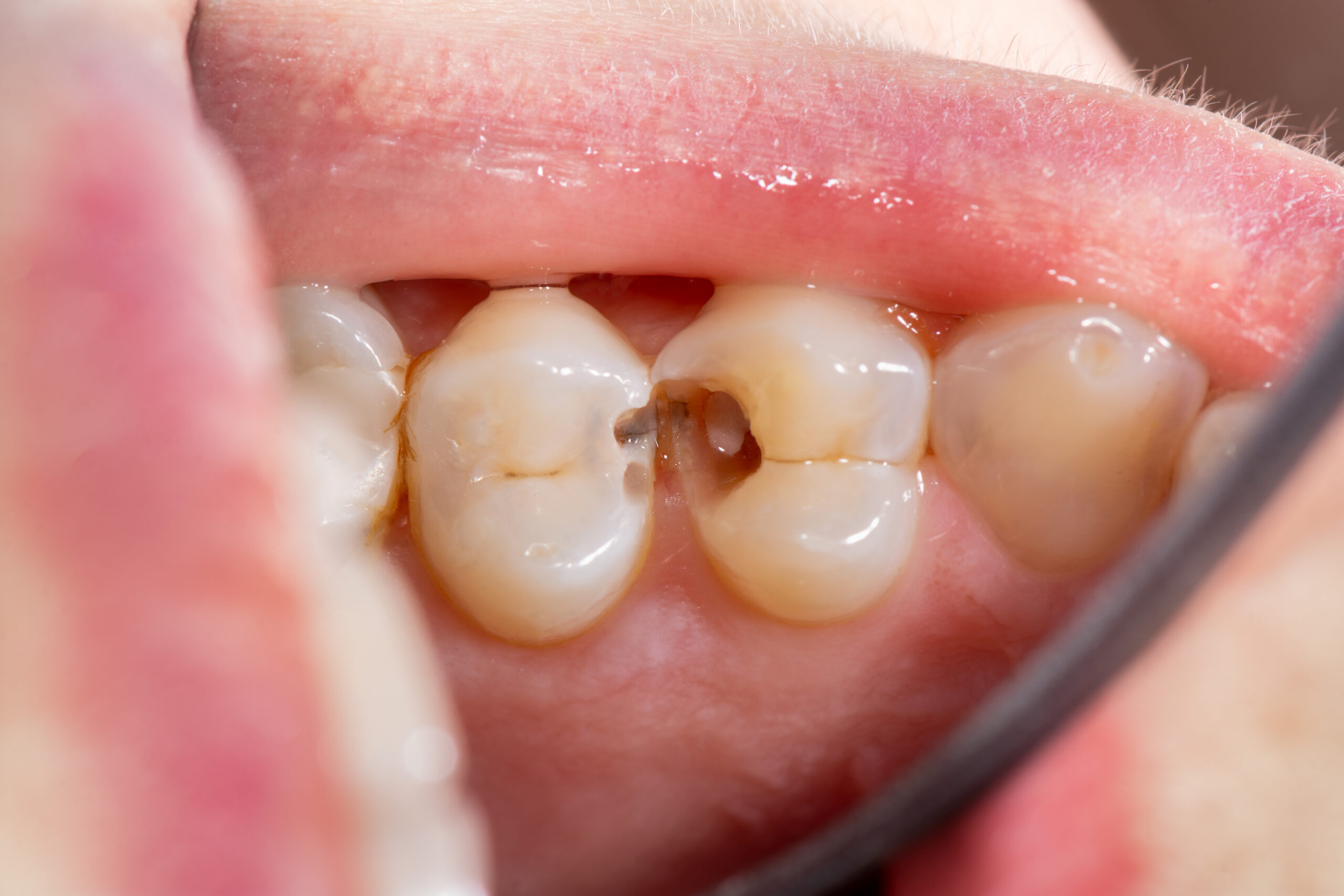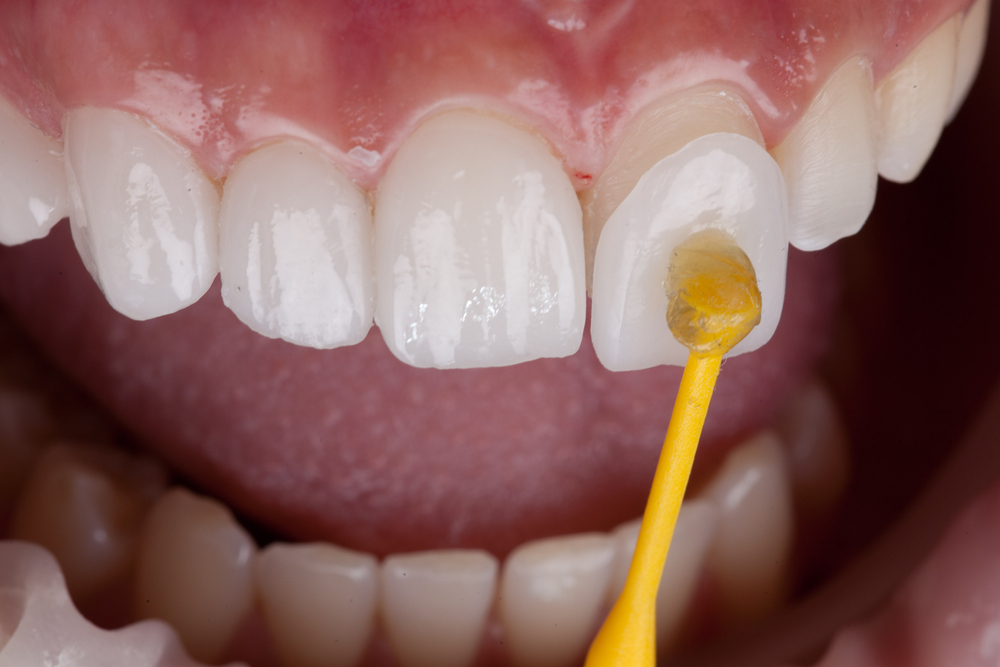In the vast universe of oral health, few things are as silently menacing as tooth decay. Often unnoticed in its early stages, this dental concern has a knack for stealthily advancing, compromising our pearly whites.
Unveiling the common yet often misunderstood issue of tooth decay.
Tooth decay is, at its core, the softening and eventual destruction of the tooth enamel, leading to cavities. What makes it particularly tricky is that it’s often painless at first. By the time pain is felt, the decay has often progressed to a stage requiring immediate attention. This quiet progression is why it’s termed the “silent culprit.” It’s incredibly common, with numerous adults and children experiencing at least one cavity during their lifetime. Yet, despite its prevalence, misconceptions abound, leading many to underestimate its effects or misjudge its causes.
How decay starts and why it’s crucial to address it early.
Decay initiates when the leftover food particles in our mouth, especially sugars, interact with the bacteria present, leading to the formation of acids. These acids can break down the tooth’s outermost layer, the enamel. Over time, this repeated acid attack weakens and erodes the enamel, giving rise to tiny openings or holes – the birth of cavities. Addressing it early is paramount, not just to avoid pain or more complex dental treatments but to preserve the tooth’s structural integrity and overall oral health.
A Closer Look: The Science Behind Tooth Decay
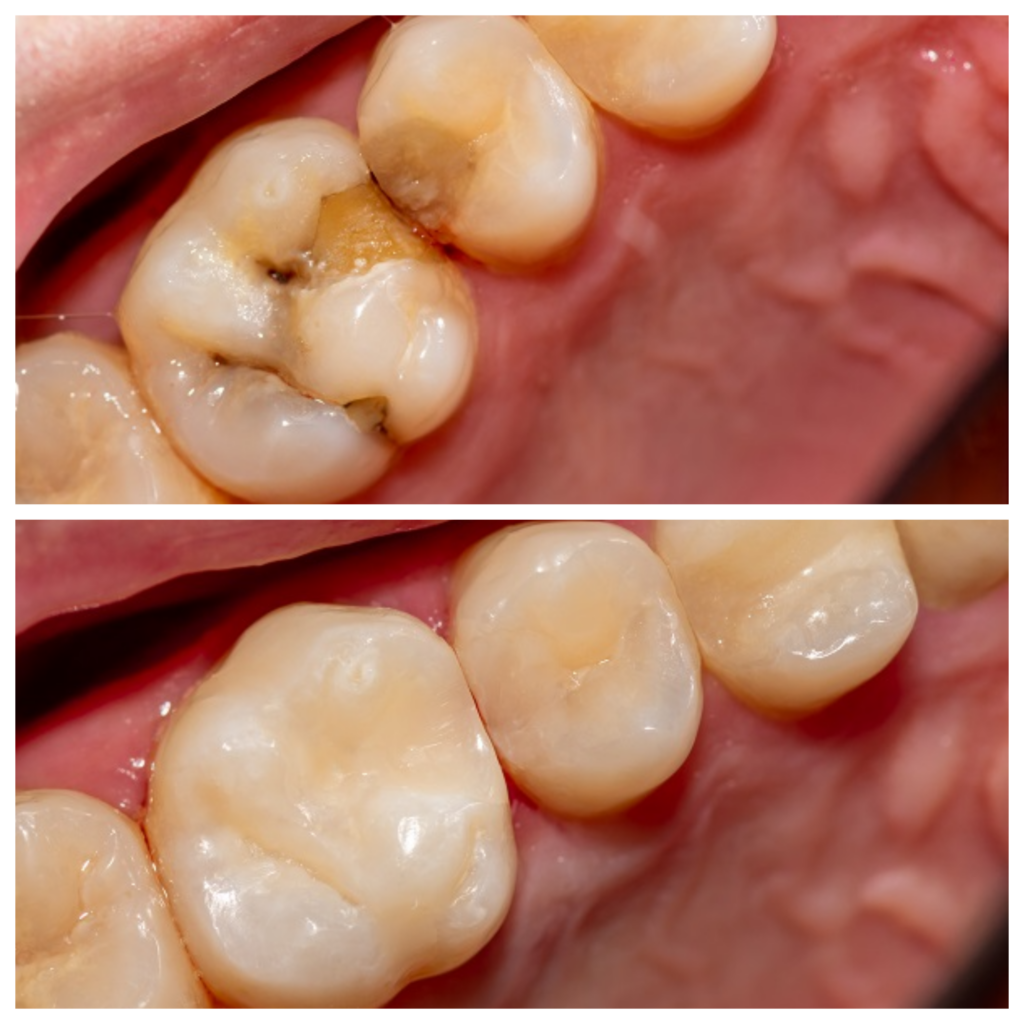
Tooth decay isn’t a simple matter of not brushing one’s teeth. It’s a complex interplay of factors, with bacteria and diet playing starring roles.
The role of bacteria and sugars in our mouth.
Our mouths are teeming with hundreds of bacteria, many of which are harmless or even beneficial. However, certain bacteria thrive on the sugars and starches we consume. As they feast on these remnants, they produce acids. It’s this acid that’s the main agent behind the enamel erosion leading to decay. Foods that are particularly rich in sugars or starch, like candies, sodas, or even bread, can thus indirectly accelerate the decay process if oral hygiene isn’t maintained.
How the erosion of tooth enamel opens the door to cavities.
Enamel is the tooth’s protective shield. It’s incredibly hard, even harder than bone, but it’s not impervious to the relentless acid attacks. Over time, as the enamel gets eroded, it loses its mineral content, becoming translucent and weakened. This demineralization first manifests as white spots. If not halted or reversed, these spots grow and deepen, leading to cavities. Without timely intervention, these cavities can further deepen, reaching the inner layers of the tooth, leading to pain, infections, and potential tooth loss.
Recognizing the Early Signs: Symptoms to Watch For
Catching tooth decay in its infancy can spell the difference between a simple remedy and an extensive procedure. Much like other health concerns, early detection is the linchpin to effective and less invasive treatment.
Spotting the initial indications of tooth decay.
In the initial stages, tooth decay might stealthily advance without any pronounced symptoms. However, there are some subtle signs one can remain vigilant for:
- White Spots: These are early indications of mineral loss from the enamel.
- Tooth Sensitivity: A sudden twinge when consuming hot, cold, or sweet foods and drinks.
- Visible Pits or Holes: These are actual cavities that are visible to the naked eye.
- Staining: Brown, black, or gray staining on any tooth surface suggests advancing decay.
- Toothache: A spontaneous pain without any apparent cause is a clear red flag.
Why early detection makes a world of difference.
Recognizing these signs can make all the difference in the world for your oral health. Early detection typically means less damage, simpler treatments, lower costs, and better chances of preserving the natural tooth. Additionally, catching and addressing decay early can prevent it from reaching the pulp of the tooth, where it can cause painful infections and necessitate more complex treatments like root canals.
From Neglect to Treatment: The Progression of Decay
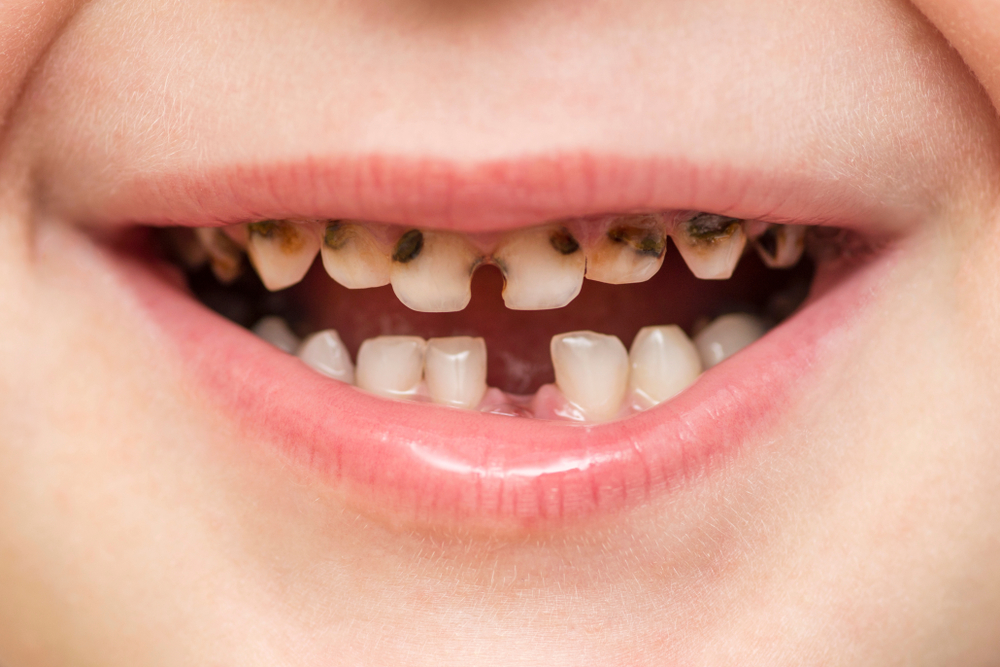
Left unattended, tooth decay does not remain stagnant; it progresses, becoming increasingly problematic and painful.
The stages of tooth decay: From a white spot to a cavity, and beyond.
- Initial Demineralization: The earliest stage, marked by a chalky white spot on the tooth, signals enamel breakdown.
- Enamel Decay: The white spot darkens as the enamel continues to erode. This is the last reversible stage with professional treatments like fluoride applications.
- Dentin Decay: Decay breaches the enamel, reaching the dentin beneath. Sensitivity increases as the dentin is porous and can transmit sensations to the nerve of the tooth.
- Pulp Involvement: The decay reaches the inner pulp, where the tooth’s nerve resides. This stage is marked by pronounced pain and sensitivity.
- Abscess Formation: If still left untreated, bacteria can lead to a painful abscess or pus pocket at the tooth’s root.
- Tooth Loss: Persistent neglect can result in tooth destruction and eventual loss.
Consequences of ignoring decay and letting it escalate.
Ignoring tooth decay is a perilous gamble with your oral health. As decay advances:
- Treatment becomes more invasive, complex, and costly.
- The risk of infections, which can spread, increases.
- Toothache and pain can become debilitating, affecting quality of life.
- Loss of teeth affects one’s ability to eat, speak, and maintain a confident smile.
- Untreated oral infections can have systemic implications, affecting overall health.
Remember, your teeth aren’t like hair or nails that regrow. Once lost, the only way to get them back is through prosthetic means, such as implants or bridges. Taking action at the earliest hint of decay is always the wisest course.
The Smile Science Dental Spa Advantage: Our Holistic Approach

Oral health isn’t just about sparkling smiles; it’s a pivotal aspect of overall well-being. At Smile Science Dental Spa, Dr. Dawson and Dr. Turke recognize this and offer a comprehensive approach, designed not just to treat, but to educate and prevent.
Dr. Dawson and Dr. Turke’s comprehensive strategy against tooth decay.
Both Dr. Dawson and Dr. Turke, with their vast experience and keen insight, believe in a holistic approach. They don’t just spot and fill cavities:
- Patient Education: Each session is an opportunity to educate patients about oral hygiene, diet, and preventative measures.
- Latest Diagnostic Tools: Employing cutting-edge technology, they can spot the early onset of decay before it becomes a larger issue.
- Tailored Treatments: Recognizing that every mouth is unique, they devise individualized treatment plans that cater to specific patient needs.
The treatments and technologies that set us apart in Glendale, AZ.
Smile Science Dental Spa isn’t just another dental clinic. What makes it distinct in Glendale, AZ are:
- Advanced Restoration Techniques: From tooth-colored fillings to laser treatments, they employ the latest to ensure minimal discomfort and optimal results.
- Comfort First: The ‘spa’ isn’t just a name. The environment is designed for utmost patient comfort, making every visit as relaxing as possible.
- Preventative Care: By prioritizing services like sealants and fluoride treatments, they focus on preventing decay from even starting.
Beyond Brushing: Lifestyle Choices to Prevent Decay

While brushing and flossing are cornerstones of oral hygiene, there’s a broader lifestyle canvas that influences the health of our teeth.
Diet, hydration, and oral hygiene habits that can reduce the risk.
- Watch the Sweets: Sugary foods and beverages can be arch-enemies of healthy teeth. Bacteria thrive on sugars, producing acids that eat away at tooth enamel.
- Stay Hydrated: Drinking water, especially after meals, can help wash away harmful acids and food particles.
- Limit Acidic Foods and Drinks: Citrus fruits, sodas, and certain teas can erode enamel, making teeth more susceptible to decay.
- Eat Tooth-healthy Foods: Foods like cheese, leafy greens, and almonds are beneficial for teeth as they’re rich in calcium and other essential nutrients.
- Chew Sugar-free Gum: It stimulates saliva production, which acts as a natural defense against acids.
The underrated importance of regular dental check-ups.
While home care is pivotal, there’s no replacement for professional oversight. Regular dental visits:
- Offer thorough cleaning to eliminate hardened plaque.
- Provide an opportunity to spot potential issues early.
- Allow for timely interventions, ensuring small problems don’t escalate into major concerns.
Together, with a balanced lifestyle and expert care, the risk of tooth decay can be significantly curtailed.
Modern Solutions: Treatment Options for Tooth Decay
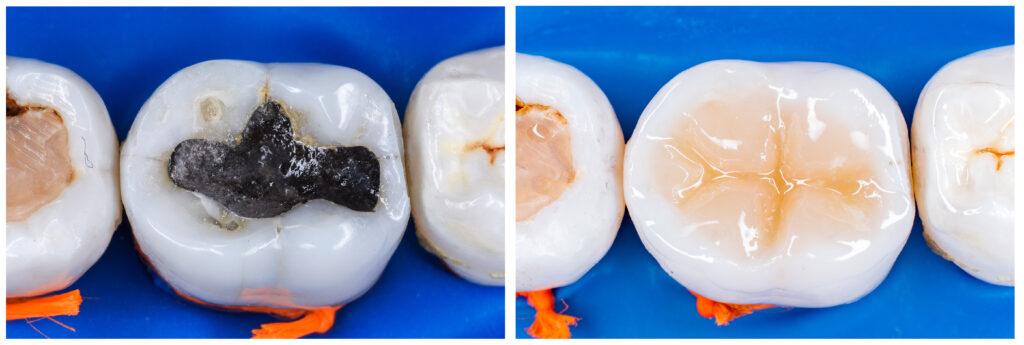
Tooth decay may be as old as humanity itself, but our approach to treating it has dramatically evolved. Modern dentistry provides an array of effective solutions tailored to each patient’s unique needs.
Filling cavities: From amalgam to tooth-colored composites.
- Amalgam Fillings: A staple in dentistry for over 150 years, amalgam fillings – a mix of metals – are durable and cost-effective. However, their silvery appearance might not be everyone’s favorite.
- Tooth-Colored Composites: A more aesthetic choice, composite fillings blend seamlessly with the natural tooth color. They bond directly to the tooth, requiring less removal of the tooth structure.
- Gold and Porcelain Fillings: For those looking for something long-lasting and aesthetic, gold and porcelain fillings come to the rescue. They’re custom-made in labs and then cemented into place.
Advanced treatments for more severe cases.
As decay progresses, it might require more than just a filling:
- Crowns: If a significant portion of the tooth is decayed or weakened, crowns act as protective covers, restoring the tooth’s shape and function.
- Root Canals: For teeth where decay has reached the inner pulp, a root canal removes the infected pulp and seals the tooth.
- Extractions: In extreme cases, when the tooth can’t be saved, it may be best to remove it and consider replacement options like implants or bridges.
The Final Word: Committing to Decay-Free Smiles
Tooth decay isn’t just a personal problem; it’s a community concern. A healthy smile can boost confidence, enhance interpersonal interactions, and even open doors of opportunity.
The value of proactive dental care in preventing tooth decay.
Prevention isn’t merely better than cure; it’s often cheaper and less discomforting. Regular check-ups, good oral hygiene, and smart dietary choices can make a massive difference in keeping decay at bay.
Smile Science Dental Spa’s pledge to keep Glendale, AZ smiling healthily.
Dr. Dawson, Dr. Turke, and the entire team at Smile Science Dental Spa aren’t just about treating dental problems; they’re about fostering a community of healthy, radiant smiles. By blending cutting-edge technology with compassionate care, they ensure that Glendale, AZ, doesn’t just smile – it shines.
Further Reading
- The Tooth Decay Process: How to Reverse It and Avoid a Cavity
- WebMD: Preventing Tooth Decay
- OHF: Preventing tooth decay
- Preventing tooth decay in children and teenagers
- Prevention of dental caries: A review of effective treatments


